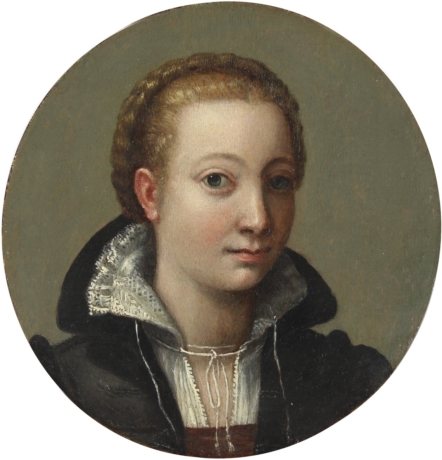
Exhibitions
POWER & ABSENCE: WOMEN IN EUROPE: 1500-1680
Memphis Brooks Museum of Art / 1934 Poplar Ave. April 1, 2024 - December 31, 2036
This reimagining of the Schilling Gallery explores the representation of women in Europe from around 1500 to 1680, known as the Renaissance and Early Baroque period. Most of the works in this room have been made by men. Women are represented as untouchable ideals, threatening monsters, enterprising community leaders, ornamental accessories to power, and models of faith. Portraits of men, meanwhile, express their power, talents, or intellect.
The museum holds work by only one woman artist from this time, Sofonisba Anguissola, displayed in the gallery. This startling fact is not unusual for art museums. From the Renaissance through to the end of the nineteenth century, women could not formally train as artists because of societal expectations and gender roles. Some women, like Anguissola, used family connections to overcome the social and political limitations of their time and achieved artistic success. Yet long-lasting reputations were dependent on the opinions of later generations. Decisions about which artists are praised in the history books and collected by museums were largely made by men. Social systems stifled the talent of countless women artists, lost to history.
Notably absent are representations of women of color from this period in museum collections, including the Brooks. This gallery questions these representations and omissions as we reinterpret our permanent collection to create a more equitable museum.
image: Sofonisba Anguissola, 'Self-Portrait', 1560, oil on wood panel, Memphis Park Commission Purchase, 43.11
About Memphis Brooks Museum of Art:
Located at 1934 Poplar Avenue in historic Overton Park, the Memphis Brooks Museum of Art is one of the leading art museums in the American South. Over 10,000 works make up Memphis’ art collection at the museum, including ancient works from Greece, Rome, and the Ancient Americas; Renaissance masterpieces from Italy; English portraiture; American painting and decorative arts; contemporary art; and African Diasporic art. In 2026, the Memphis Brooks Museum of Art will open its new home and become Memphis Art Museum: a state-of-the-art, 122,000-square-foot facility at the heart of downtown Memphis. For more information on the current programming and future plans for Memphis’ art museum, call 901-544-6200 or visit brooksmuseum.org.
Press Contact: Kelly Helton, kelly.helton@brooksmuseum.org, 901-590-6935

